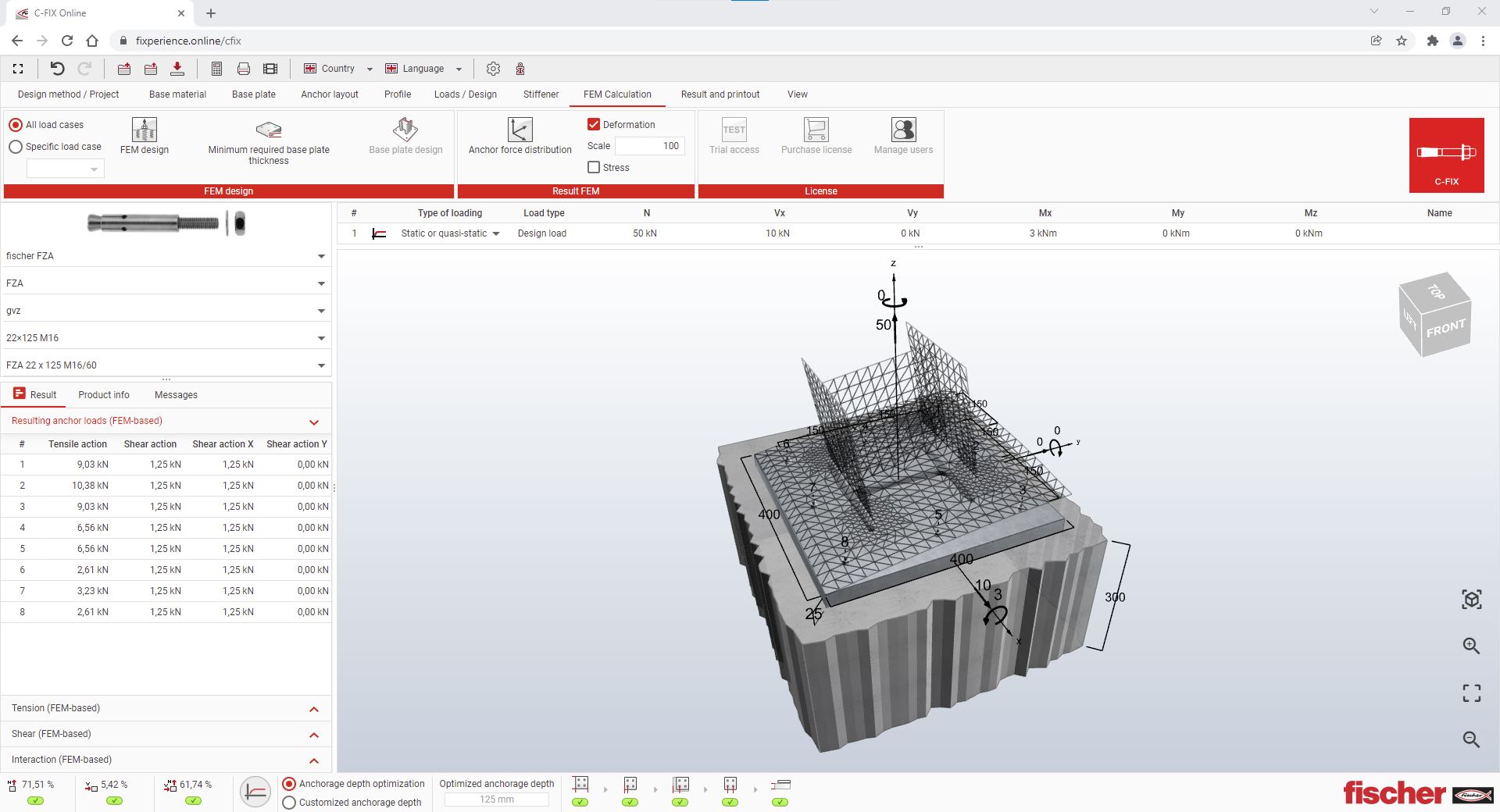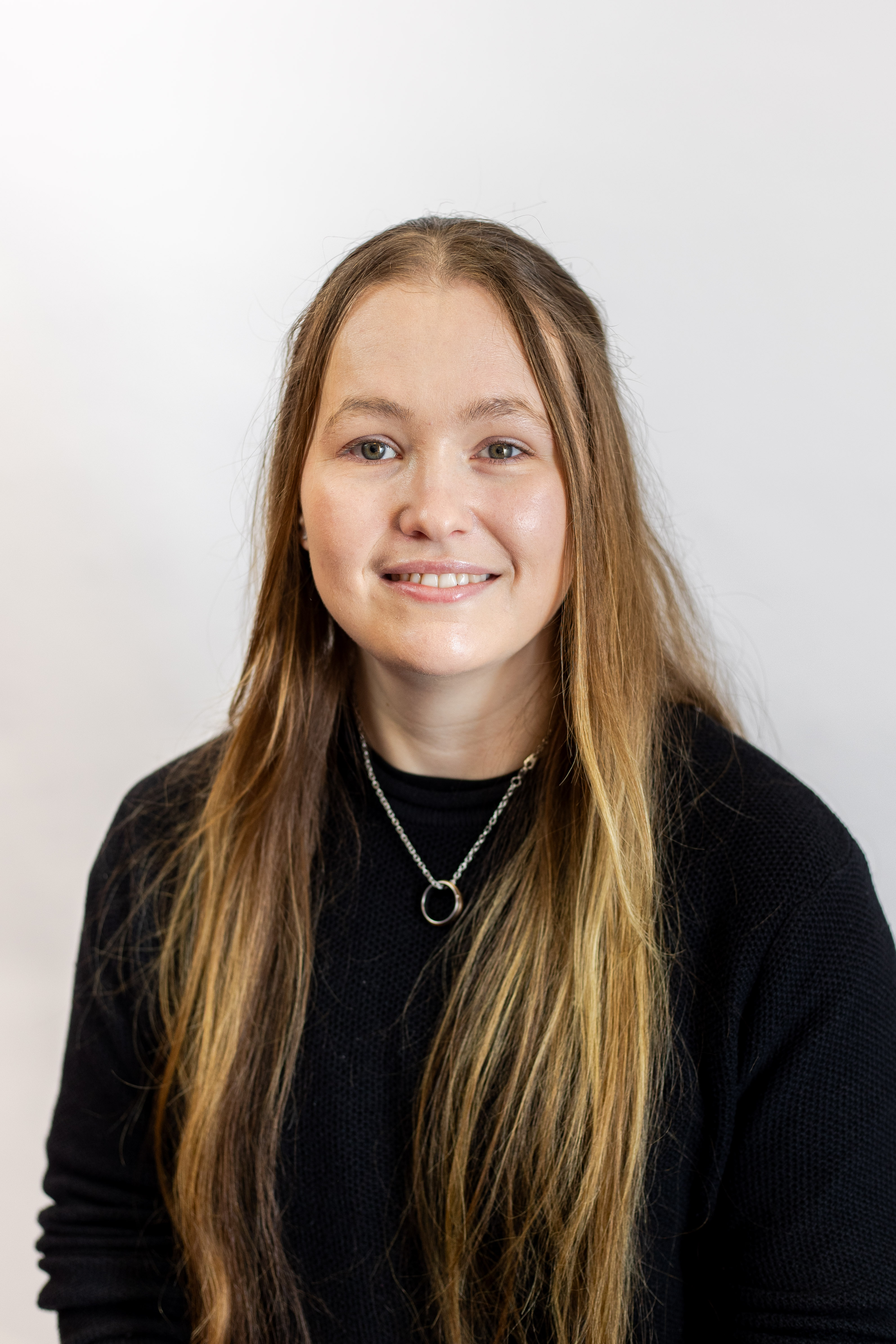
fischer has launched a new online software tool which helps its customers design fastening solutions - either for entire projects or for individual applications.
Standard methods currently available for designing fastenings in concrete have their limitations, which is where spring models combined with the Finite Element Method (FEM) come into play. The C-FIX software’s new FEM module in the fischer FiXperience Online suite makes it particularly convenient and time saving for planners to apply the innovative design method.
The FiXperience suite allows planners to design entire projects and individual applications with ease, flexibility and reliability. The FiXperience design software has been available as a browser version in addition to the established desktop version for some time. The featured C-FIX Online module for designing steel and bonded anchors in concrete now allows planners to assess the stiffness of the base plate and calculate realistic anchor forces with a linear spring model in combination with the FEM. 
Current standards and guidelines only cover the design of 3x3 anchor groups with rectangular anchor configurations in all load directions, while tension loaded anchorages require the use of a sufficiently stiff base plate. There are insufficient definitions and regulations to determine sufficient base plate stiffness, however.
The application of spring models combined with the Finite Element Method (FEM) allows the limitations of these current procedures to be overcome. This innovative method is now particularly quick and easy to use with the FiXperience C-FIX Online module. Spring models take into account the stiffness of the anchors and base plate of realistic fixing scenarios and allow the realistic force distribution of individual anchors within a group to be calculated. The behaviour of the entire fastening system can be represented on this basis.
Non-linear spring models are a particularly innovative design method, enabling the direct calculation of the resistance of an anchor group taking into consideration the base plate geometry and the non-linear load displacement behaviour of each individual anchor in any anchor layout. Using the non-linear spring model does not require any additional verification of stiffness and the force distribution between the anchors of a group can be determined directly via analysis. Non-linear spring models can be used for the purpose of optimising applications for which there are otherwise no current design rules.
The FEM model can be activated in various design conditions in terms of static and seismic. In order to optimise the base plate stiffness, the software allows to calculate the minimum required base plate thickness at the touch of a button. The software also lets users increase the base plate thickness or change the connected profile, add stiffeners or select a different anchor system for improved load distribution. Multiple loading cases can be defined and calculated.
Planners can generate verification of sufficient base plate stiffness and thereby carry out the design in line with procedures regulated by standards. The software displays the deformation profile of the anchorage, stresses and anchor forces for the decisive or selected loading cases in a realistic way. Additionally, it is possible to perform the base plate design by checking the steel stresses, weldings, hole bearing and concrete compression below the base plate.
The fischer FiXperience software undergoes continuous development to meet current design standards and requirements of planners and structural engineers. The new EN 1992-4 standard has already been fully integrated into C-FIX Online. As a result, the verification is valid across Europe in terms of current design standards, including European Application Documents.

Becca is the latest member to join our team and is eager to get stuck into the world of fasteners. She brings an enthusiastic and fresh outlook on what we do editorially and will be leading our social media activity – including sourcing material, editing articles and posting online.






